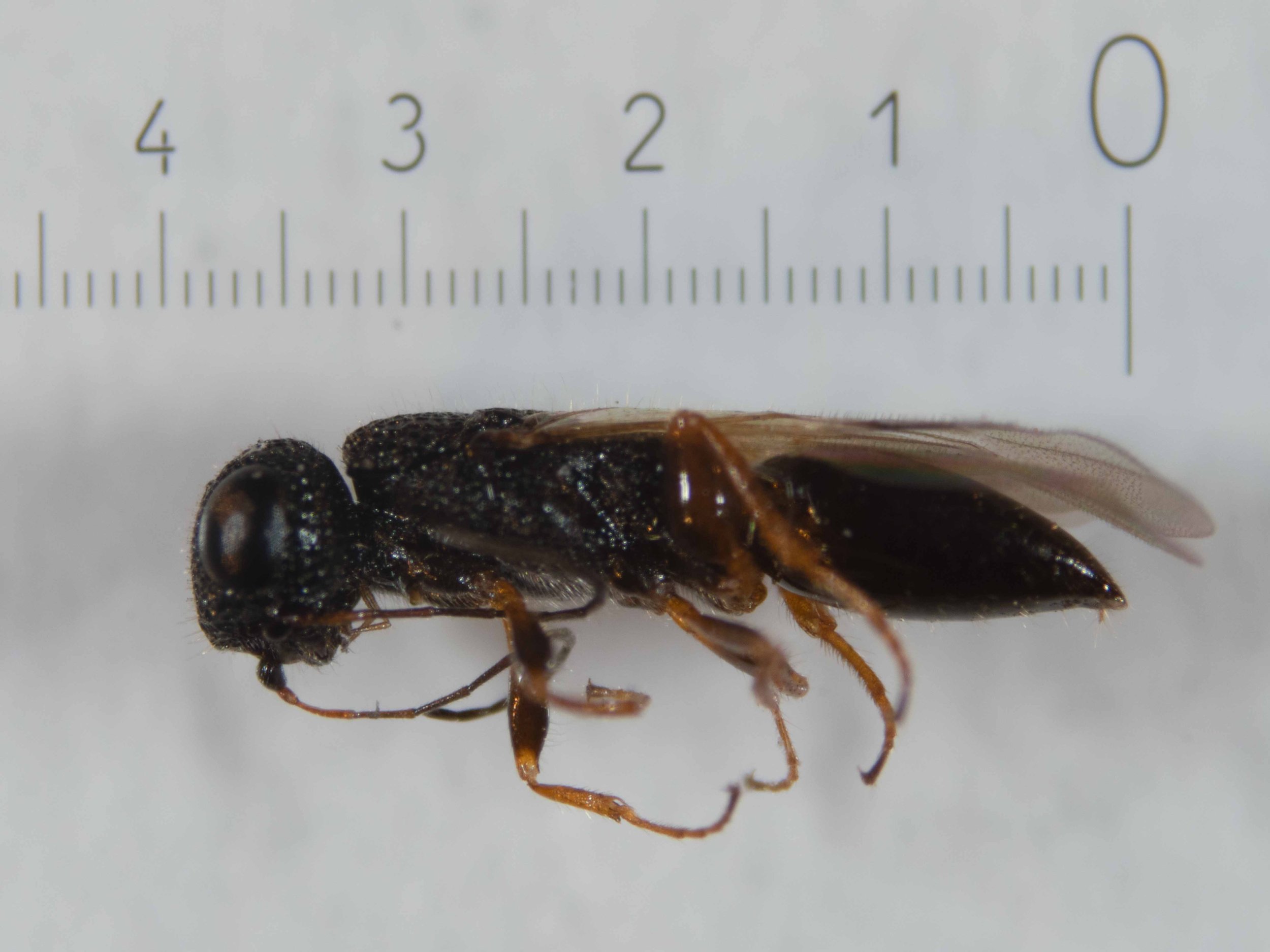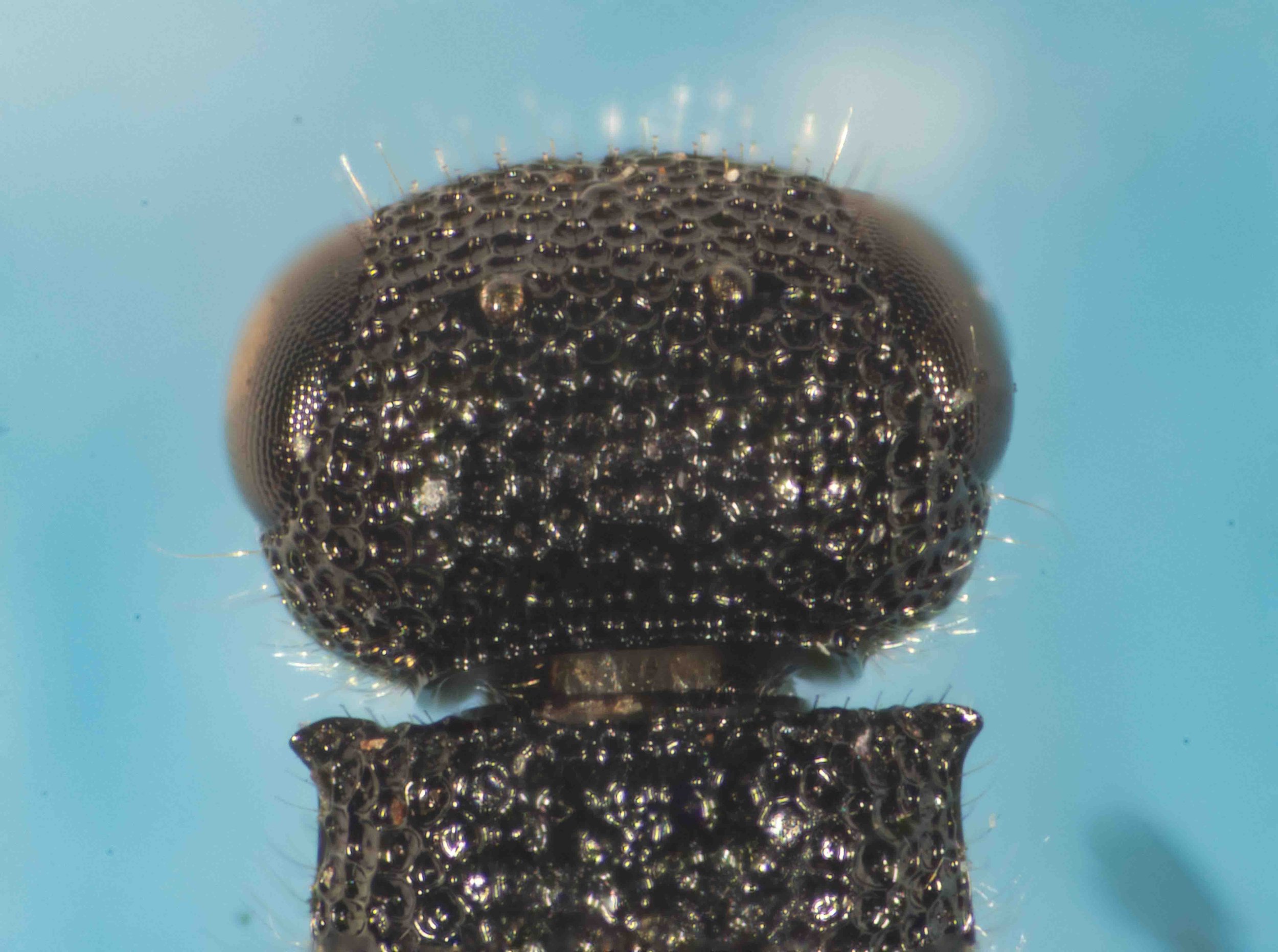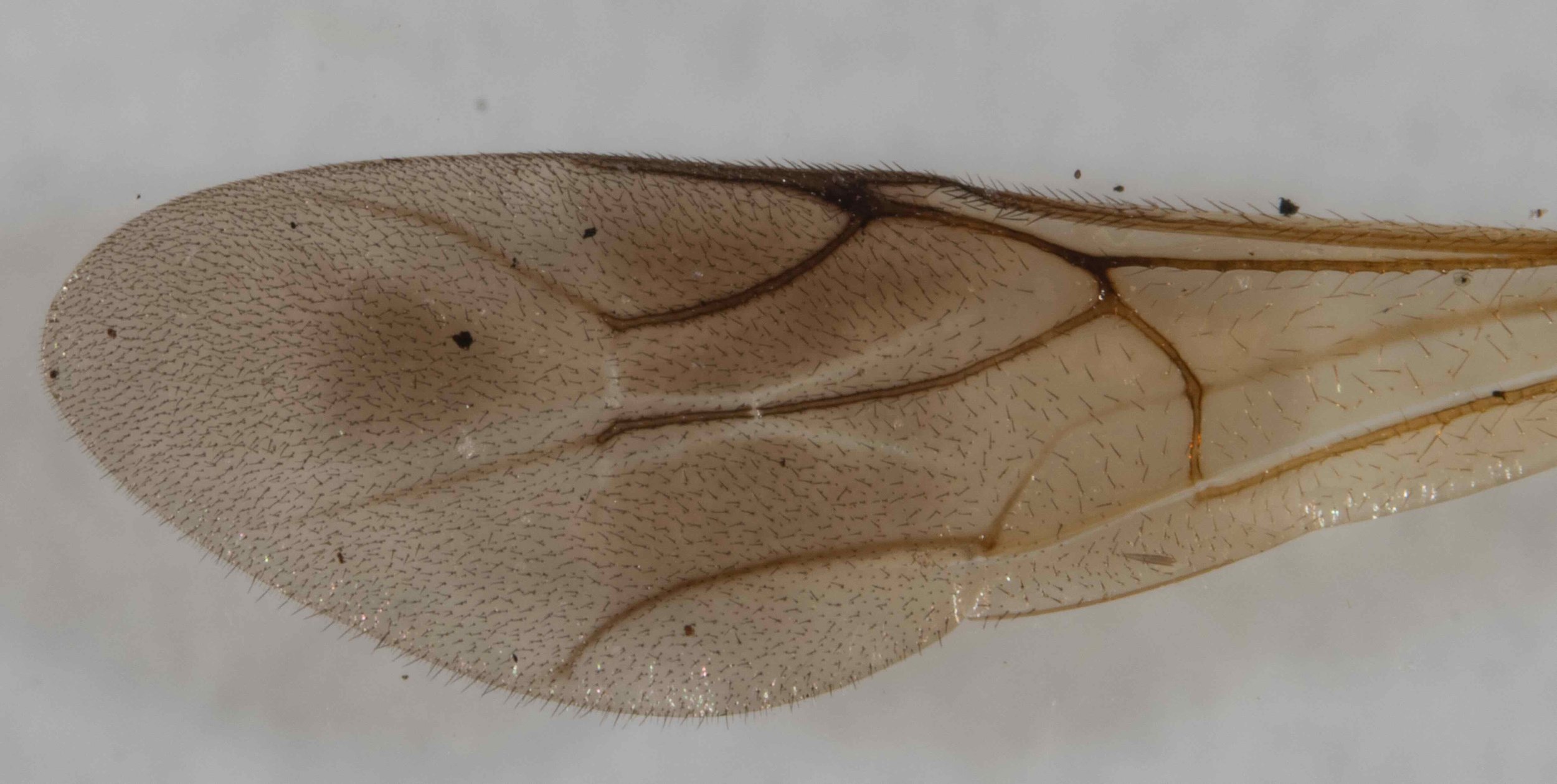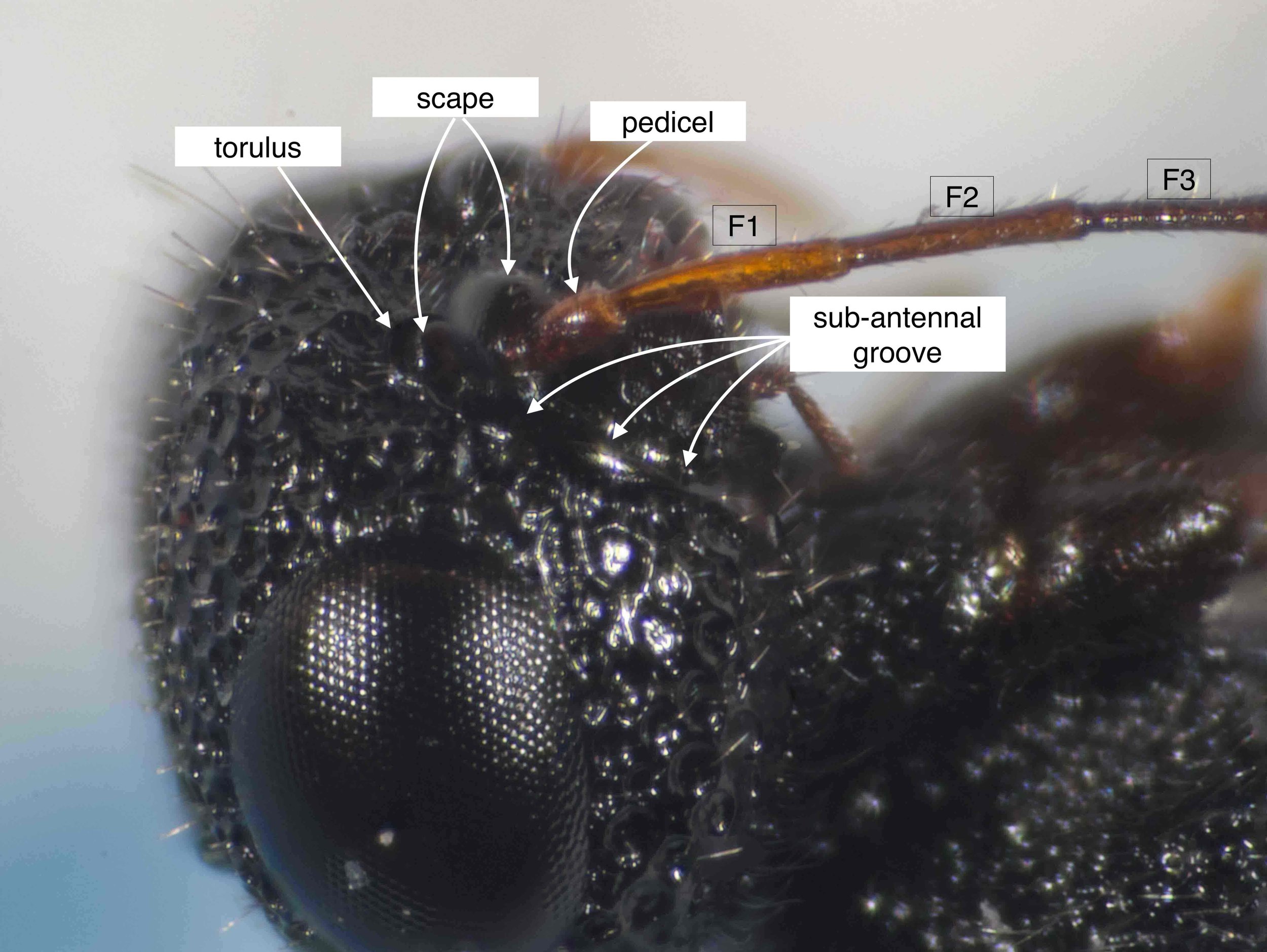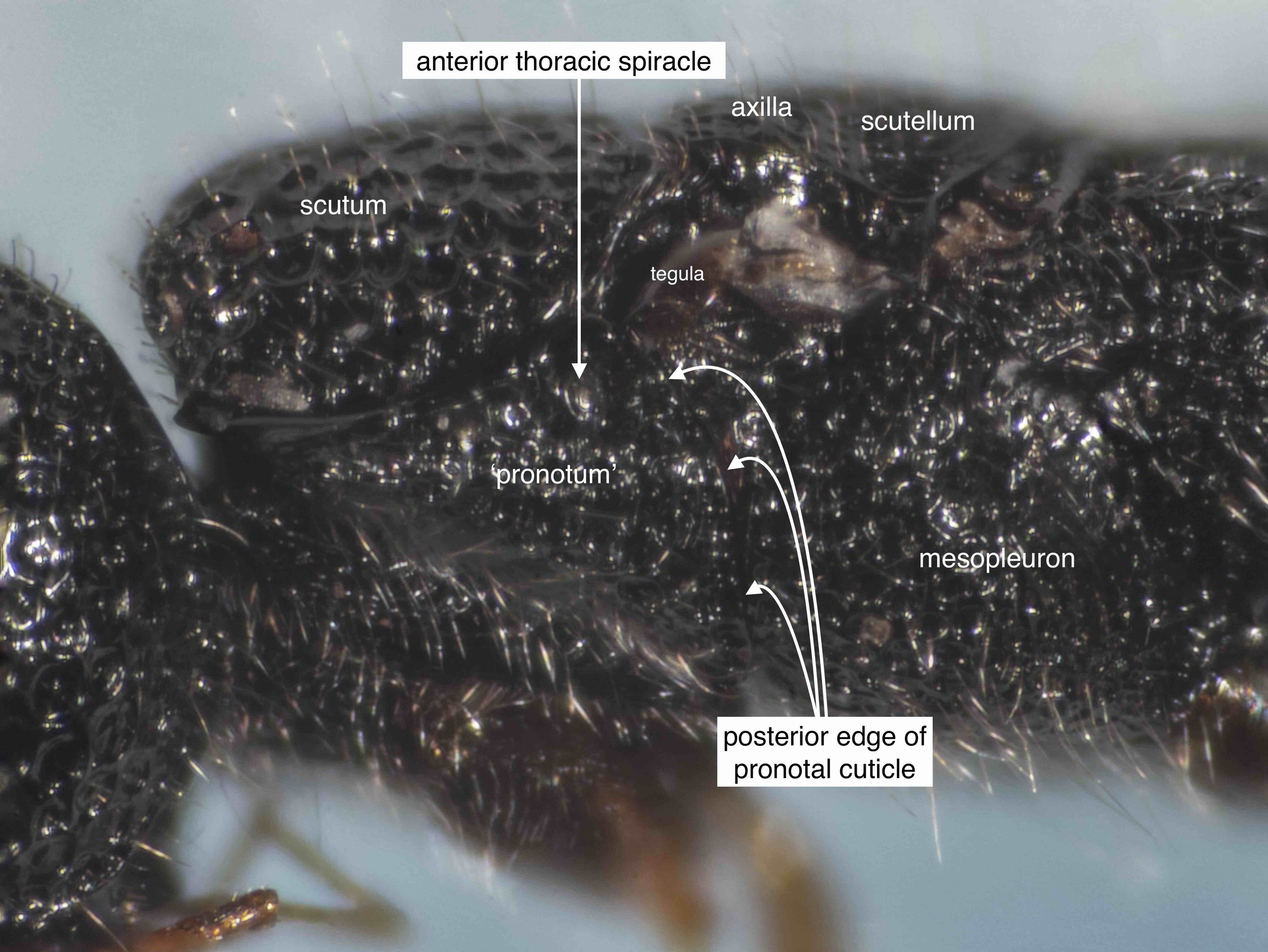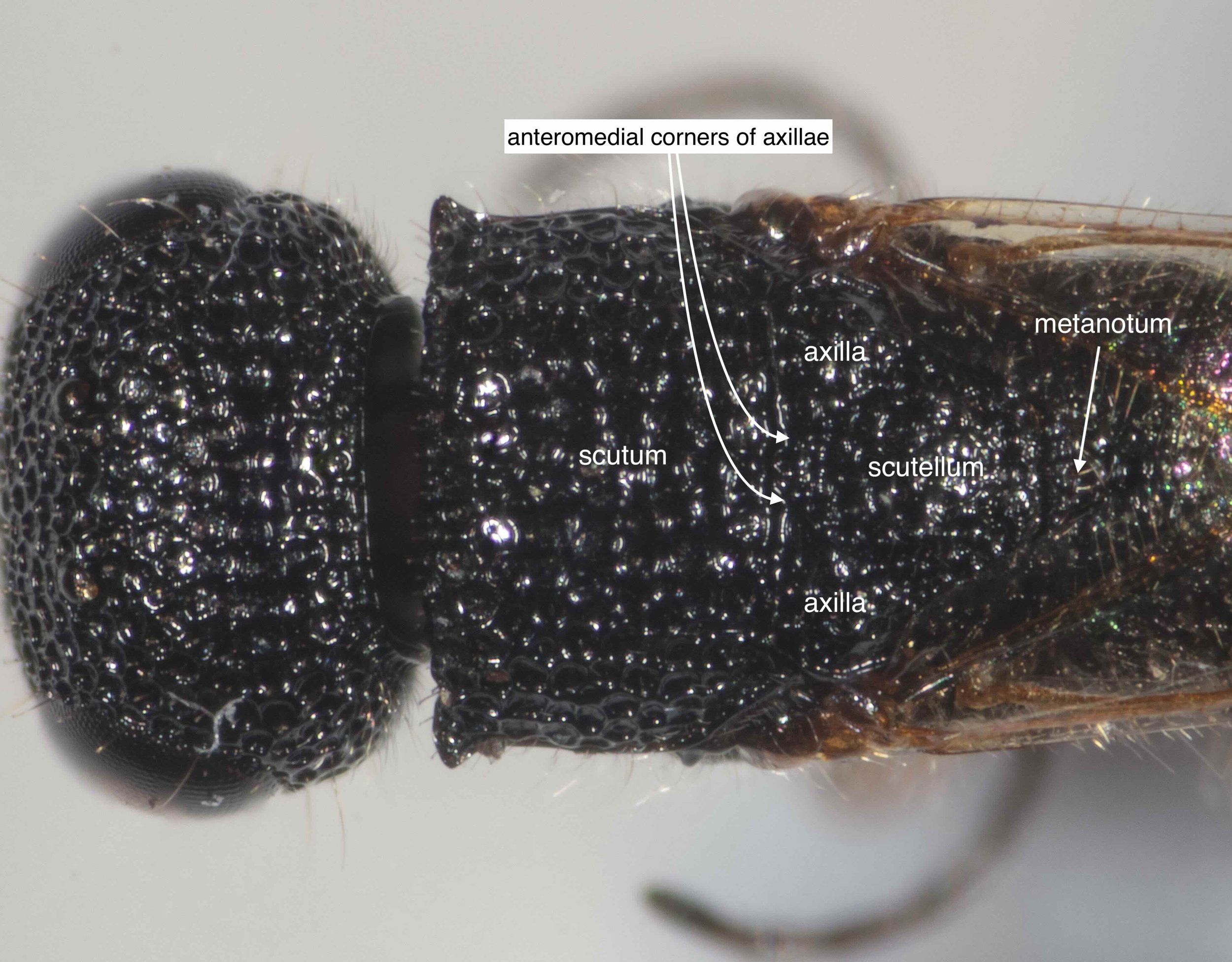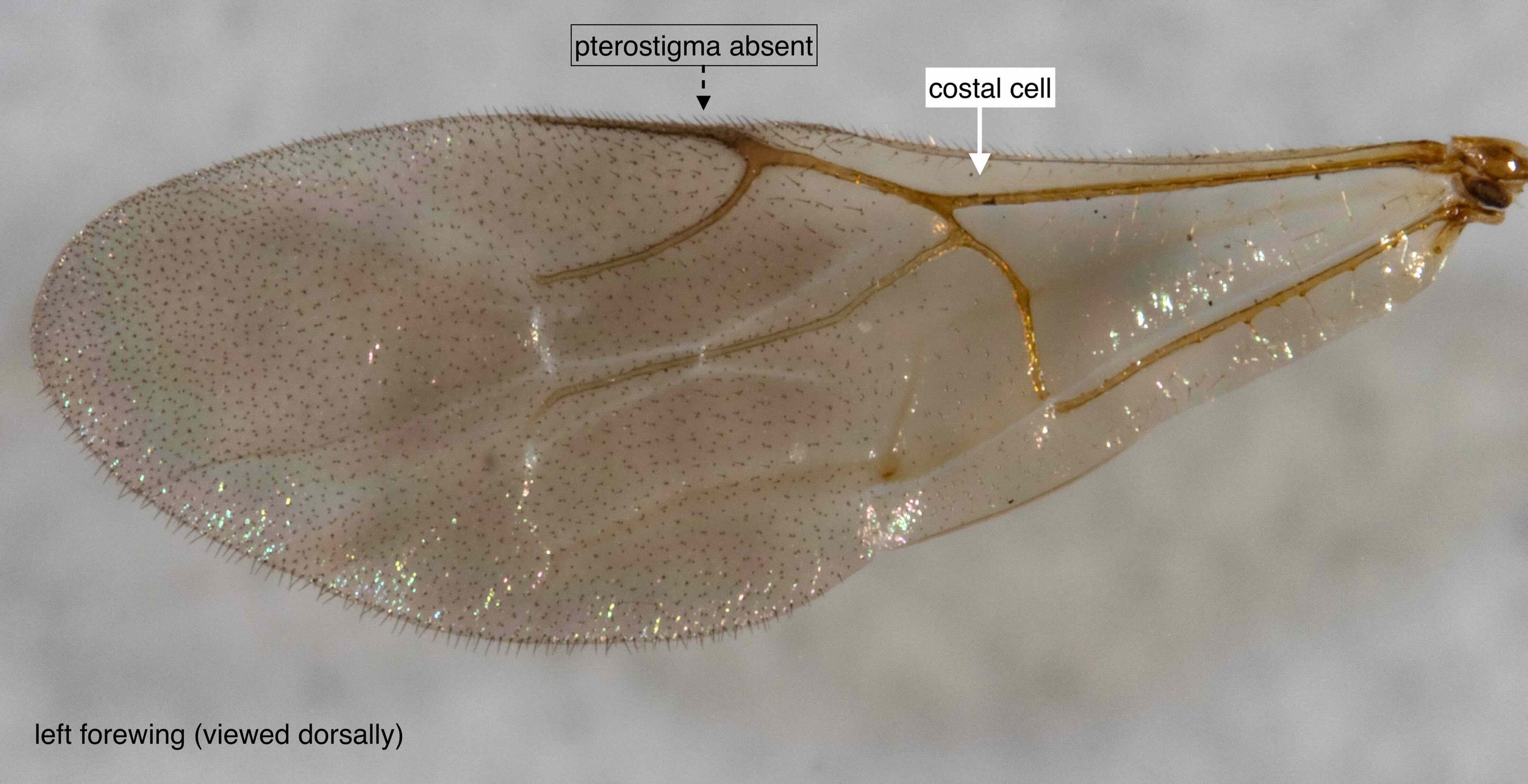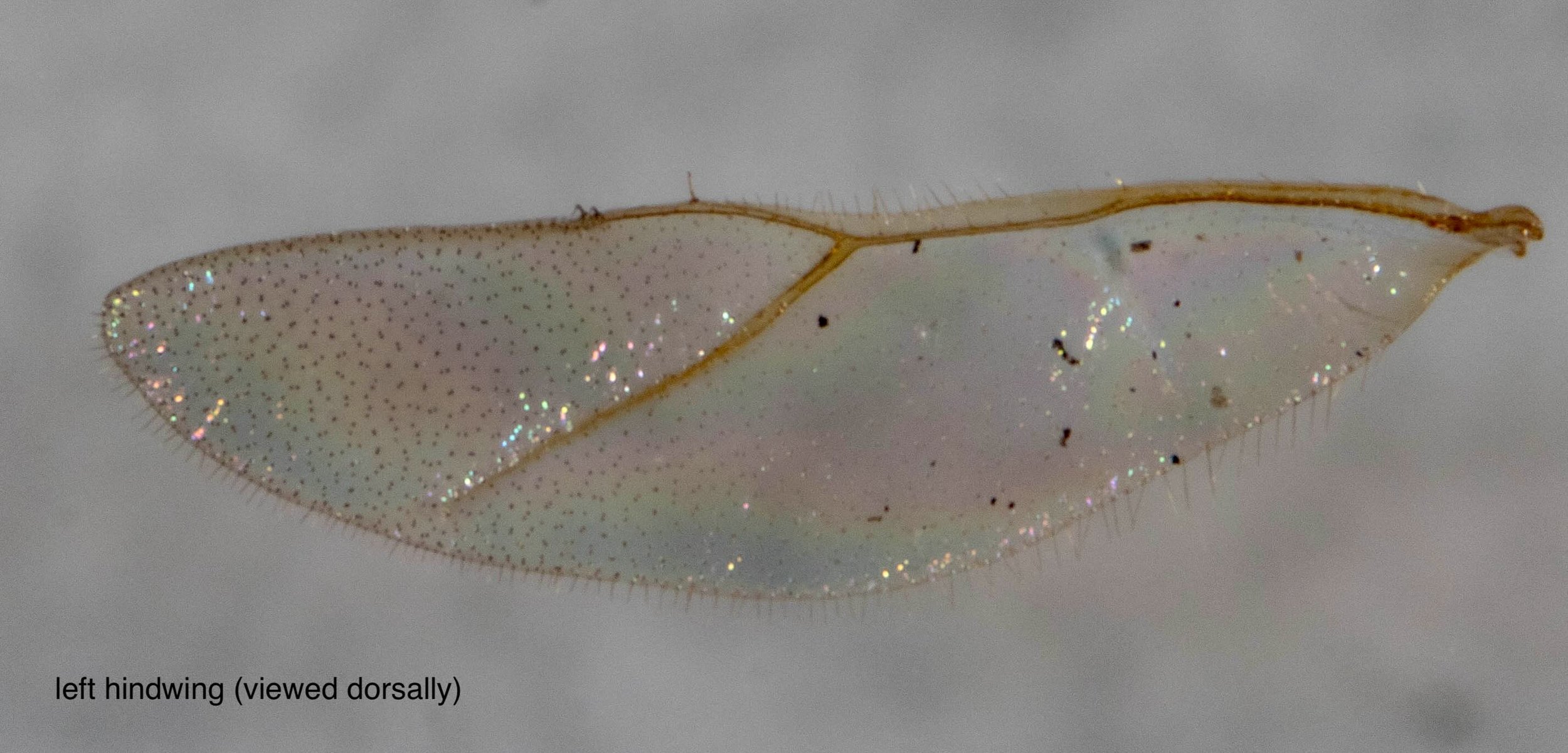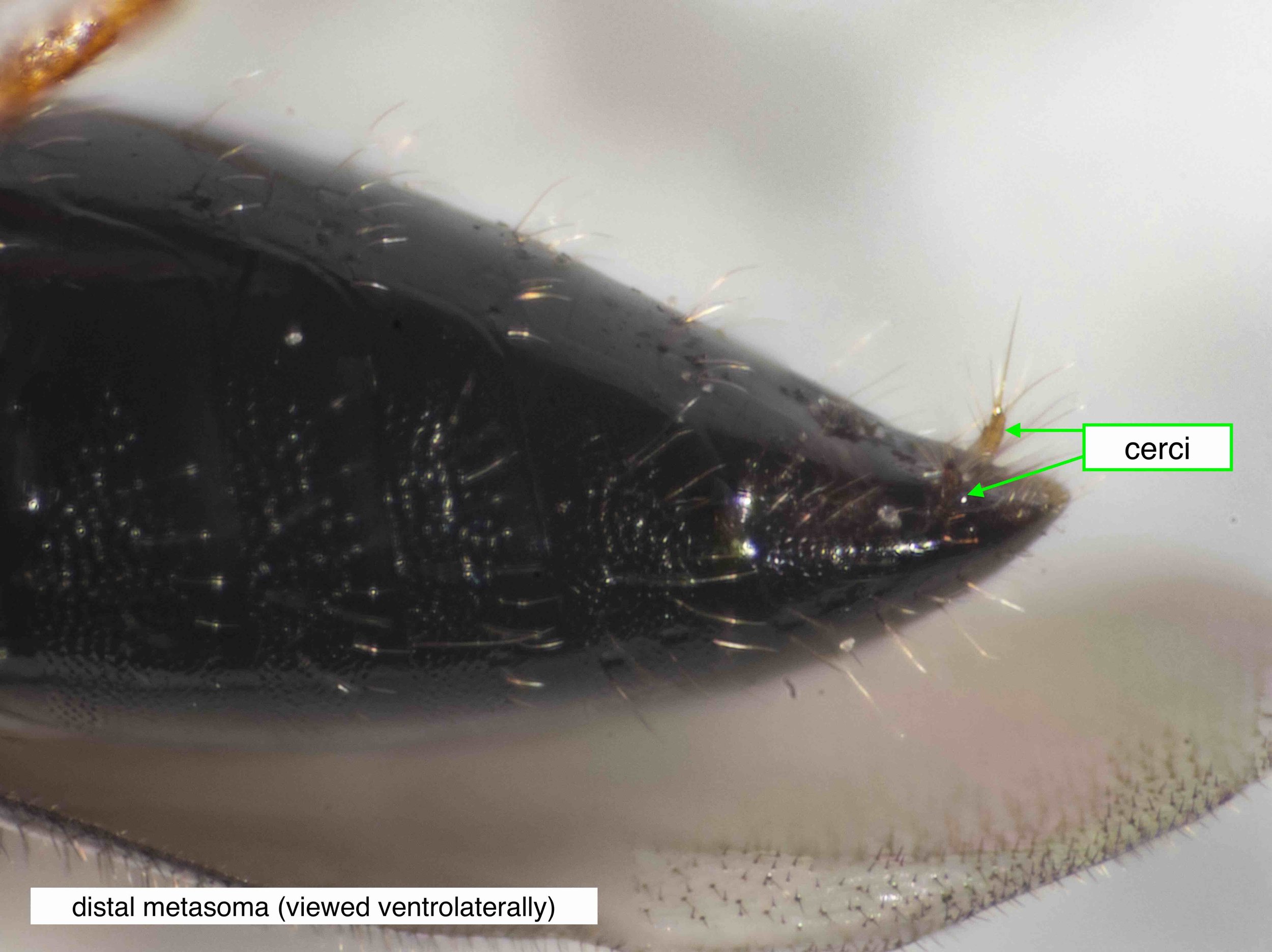Megalyrid Hub
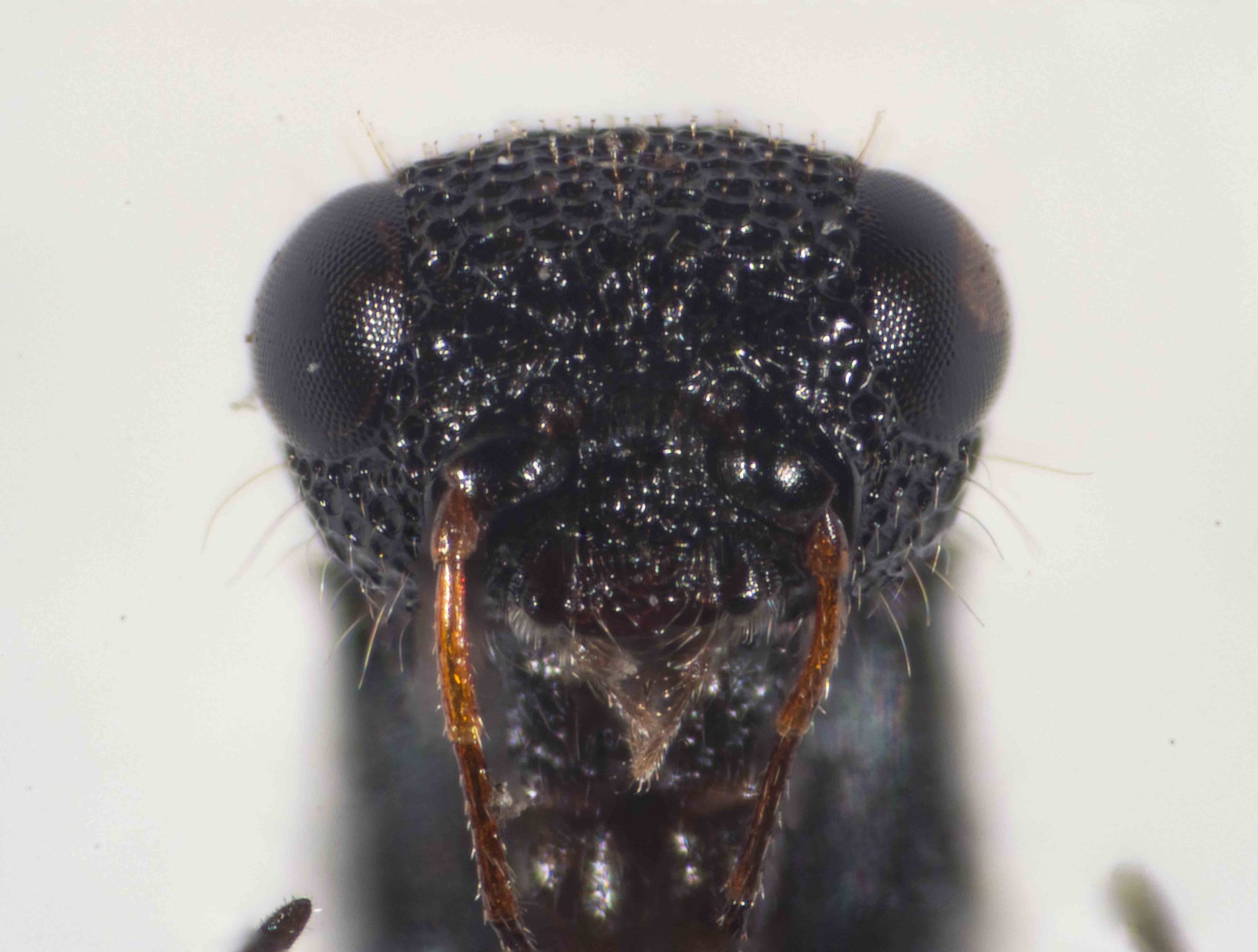
Until recently I knew nothing at all about this group of parasitoid wasps – and perhaps that is not so surprising. Megalyra are quite rare in collections and there are few field sightings or studies. Most are presumed to be ectoparasites of wood-boring beetle grubs, but at least one species is known to use concealed wasp larvae as hosts.
This page serves as a collation of our various notes, resources, references and blog posts relating to megalyrid wasps. Now that I know what to look for, I hope to find live Megalyra here in the forest and … with luck … to discover a little more about their biology.
Like all our workbook pages, these notes are a work in progress. Although developed simply for my own use, and no doubt imperfect, I’m happy to share these resources with interested fellow naturalists.
Unusual specimens, collected by an unusual method.
In June I discovered this small wasp (ID 2406C) dead inside the house. Clearly not a crabronid, and quite unlike any other wasp I was familiar with. In mid August, while still working through identification of 2406C, I found a second wasp (ID 2408B) in the same place and same state – on the window sill, dead. Evidently insects are emerging from our winter stack of firewood in the house, flying towards light, then perishing. It seems we’ve discovered a novel entomological sampling method! The sticks and logs in the firewood pile were all collected here in the forest, so these are clearly local species.
1: Introducing Megalyridae
… a new family (indeed, a new superfamily!) for our home list!
Faced with such unfamiliar (and rather weird looking) wasps, I went back to basics for an ID. First step, browse Naumann’s chapter (1991) on Hymenoptera looking for a clue. It didn’t take long to find a match.
Wasps of the superfamily Megalyroidea, which comprises the single family Megalyridae, share the following features (see Naumann, 1991; Vilhemsen et al., 2010):
antennae with 14 segments (usually filiform)
subantennal groove present
pronotum reduced anteromedially (i.e. no visible dorsal region), extensive laterally
independent prepectus absent (replaced by or perhaps fused with pronotal cuticle)
anterior thoracic spiracle exposed, surrounded entirely by ‘pronotal’ cuticle (& not covered by a pronotal lobe) (also Gibson, 1985)
axillae of scutellum large, contigous or narrowly separated
forewing with stigma reduced or absent, costal cell present
hind wing venation reduced
cerci digitiform
metasoma anteriorly broad (but with very short petiole formed by anterior extensions of T2/S2 [not imaged to avoid further damage to specimen]
Megalyridae includes 8 genera, but only one is found in Australia – Megalyra.
Megalyra
There are currently 22 described species of Megalyra in Australia. Shaw (1990) described 10 of these and revised the genus as a whole. There is considerable variable between species, including in such obvious features as body size, wing colouration and venation, and antennal shape.
Megalyra females typically have very conspicuous ovipositors. In some species, the ovipositor length far exceeds the wasp’s body length … hence the common name ‘long-tailed wasp’.
Museums Victoria. Photographer: Lucinda Gibson. https://collections.museumsvictoria.com.au/specimens/1018820
Note that although Riek had proposed this as a new species (Megalyra westwoodi), Shaw (in 1988) referred it to the widespread and variable species, Megalyra fascipennis. And it's clearly a female.
Indeed the relative length of the ovipositor is valuable for distinguishing between species … but this doesn’t help me with my two specimens. Both 2406C and 2408B lack ovipositors and I see no evidence of them having been broken off … therefore I conclude that both are males.
2. Species summary
In his comprehensive review of Megalyra, Shaw (1990) noted the scarcity of specimens in collection. He reviewed the holdings of 26 museums around the world, and yet nine species are based on fewer than three specimens, and eight species are each based on a single female. Moreover, for 12 species males are completely unknown. For these reasons Shaw took a rather conservative approach in revising the taxonomy of the genus: he avoided sub-genera and, while acknowledging the rather distinct character of the minuta species-group, he declined to consider it a distinct genus.
Based on Shaw’s work, I have summarised a range of features that might help me identify my collected specimens to species. Perhaps. With caution. The matrix is a work in progress, and many characters will not prove discriminating … but it’s a start.
Given how rarely Megalyra are encountered and collected, it is highly likely that additional species remain undescribed. This is true of most invertebrate taxa, but perhaps it is particularly so for the smallest of these elusive parasitoid wasps. Something to bear in mind if any specimens we find don’t quite fit existing descriptions.
3. Bits & pieces
Useful reference material for interpretation of the descriptions of Shaw and colleagues. These also provide some of the few published images of Megalyra species that I have been able to source.
4. Workbook notes
Links to identification pages for individual specimens … with an aim of establishing a species-level ID.
5. Related blog posts
Links to megalyrid-related blogs from the main part of the website.
References
Gibson, G.A.P. 1985. Some pro- and mesothoracic structures important for phylogenetic analysis of Hymenoptera, with a review of terms used for the structures. The Canadian Entomologist, 117: 1395-1443
Goulet, H. & Huber, J.T. 1993. Hymenoptera of the World: An Identification Guide to Families. Research Branch, Agriculture Canada Publication.
Mesaglio, T. & Shaw, S.R. 2022. Observations of oviposition behaviour in the long-tailed wasp Megalyra fasciipennis Westwood, 1832 (Hymenoptera: Megalyridae). Austral Ecology, 47(4): 889-893 open access https://doi.org/10.1111/aec.13163
Naumann, I.D. 1987. A new megalyrid (Hymenoptera: Megalyridae) parasitic on a sphecid wasp in Australia. Journal of the Australian Entomological Society 26: 215-222
Naumann, I.D. 1991. Hymenoptera (Wasps, bees, ants, sawflies). pp. 916-1000 in CSIRO (ed). The Insects of Australia. A textbook for students and research workers. Carlton : Melbourne University Press.
Shaw, S.R. 1990. A taxonomic revision of the long-tailed wasps of the genus Megalyra Westwood (Hymenoptera: Megalyridae). Invertebrate Taxonomy 3: 1005-1052
Shaw, S. R. 2007. Megalyroidea. Megalyridae. Version 20 February 2007. http://tolweb.org/Megalyridae/22033/2007.02.20 in The Tree of Life Web Project, http://tolweb.org/ ( http://tolweb.org/Megalyridae/22033/2007.02.20 accessed 7th Sept 2024)
Vilhemsen, L., Perrichot, V., & Shaw, S.R. 2010. Past and present diversity and distribution in the parasitic wasp family Megalyridae (Hymenoptera). Systematic Entomology, 35: 658-677

